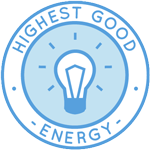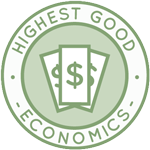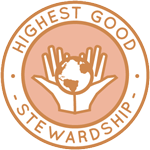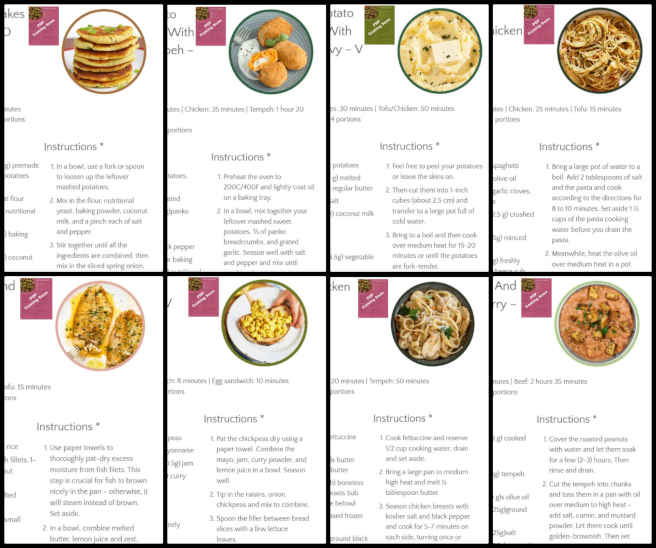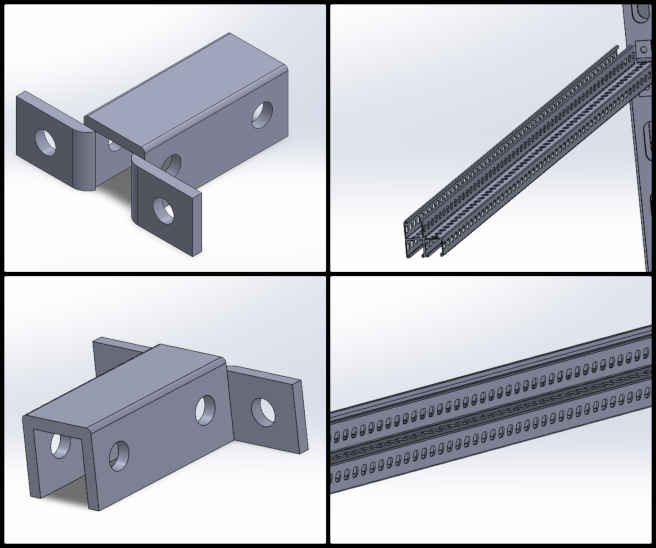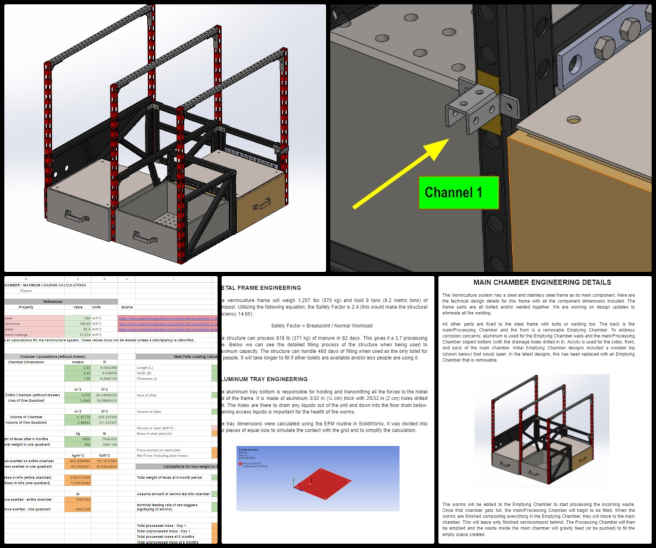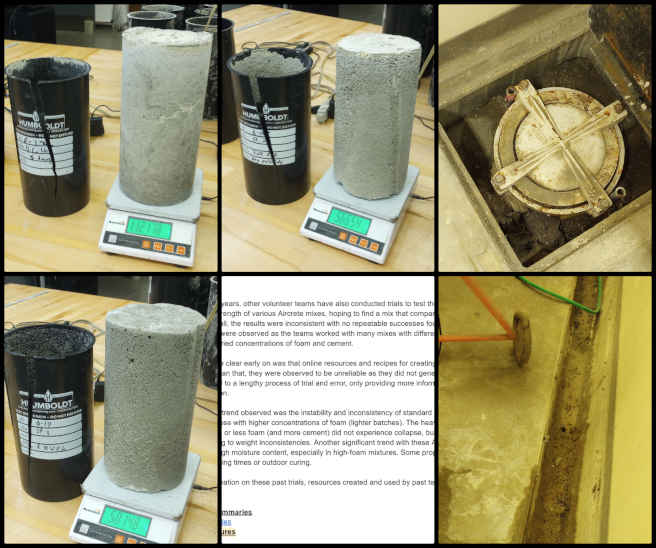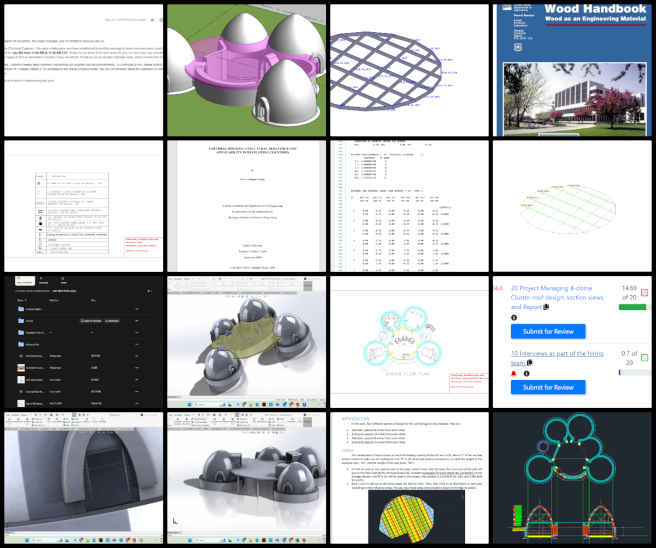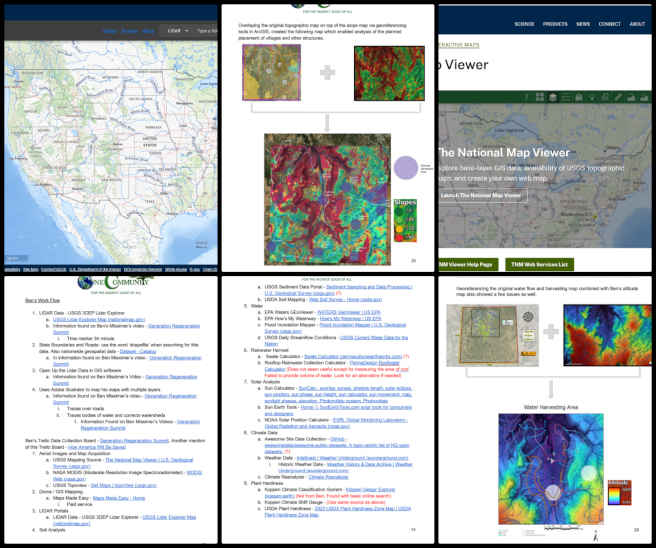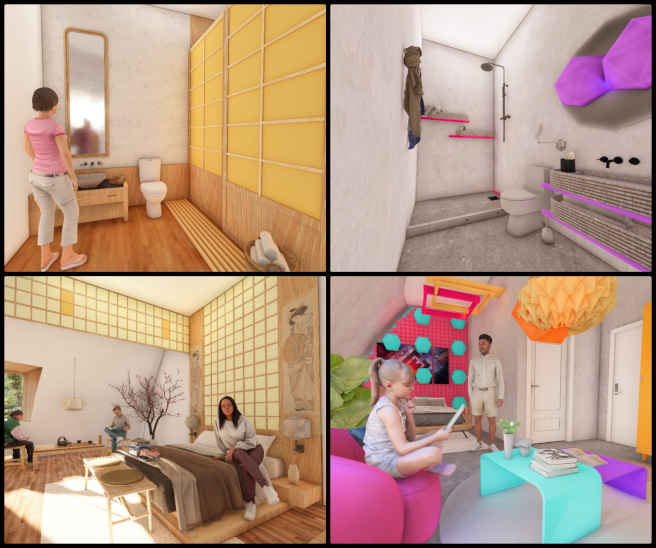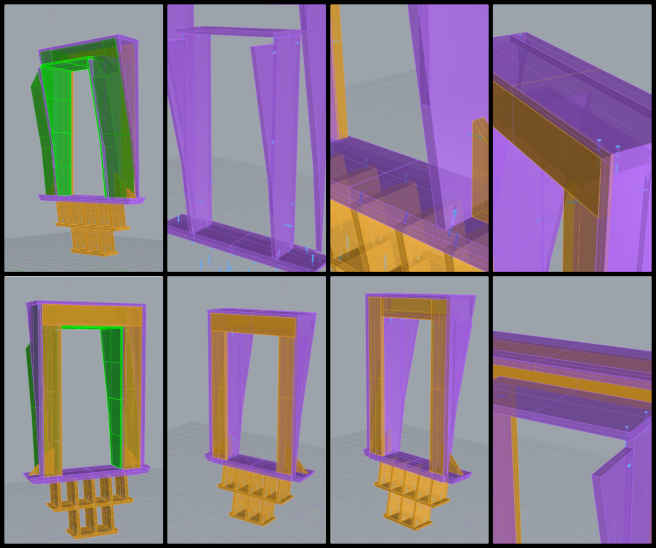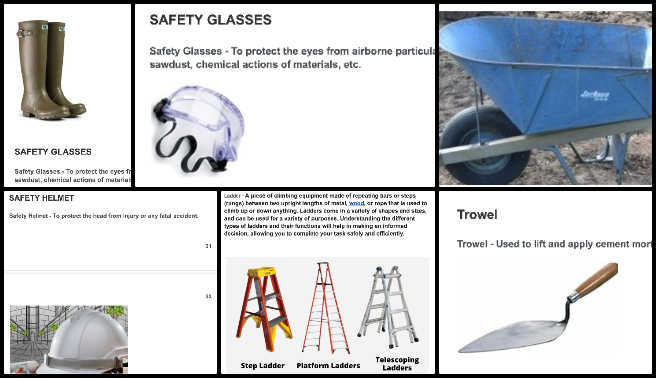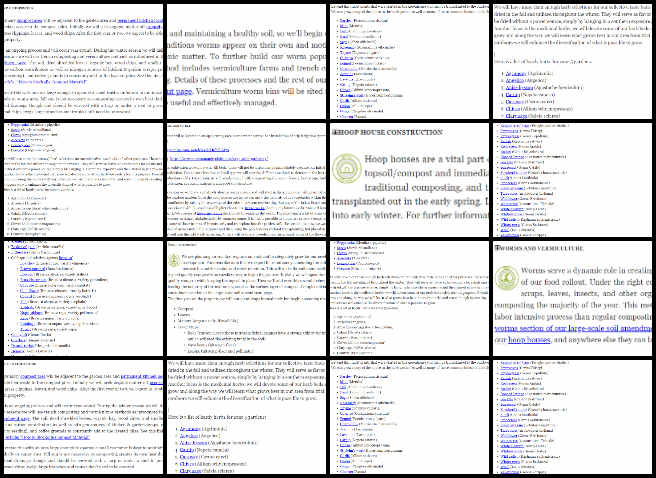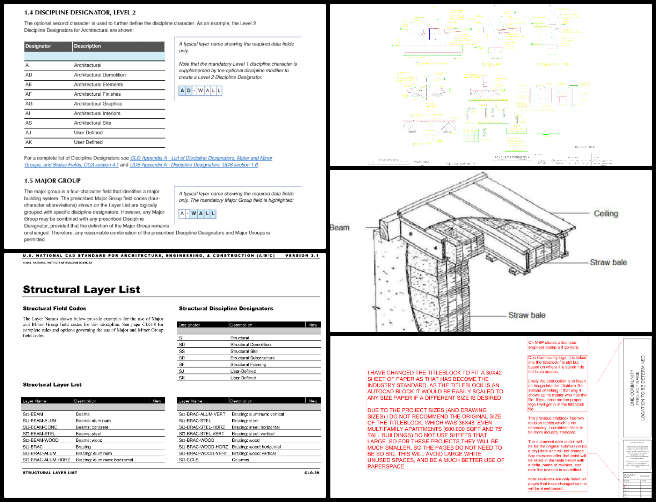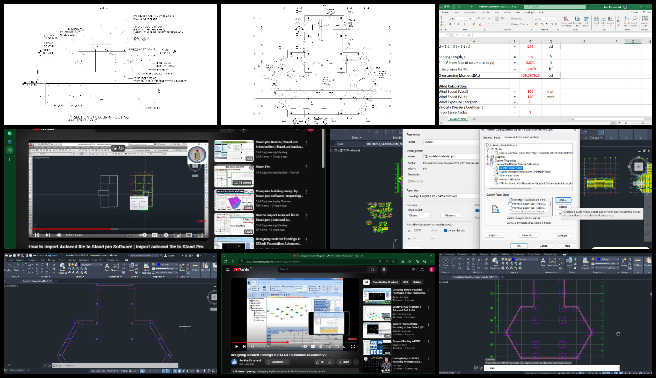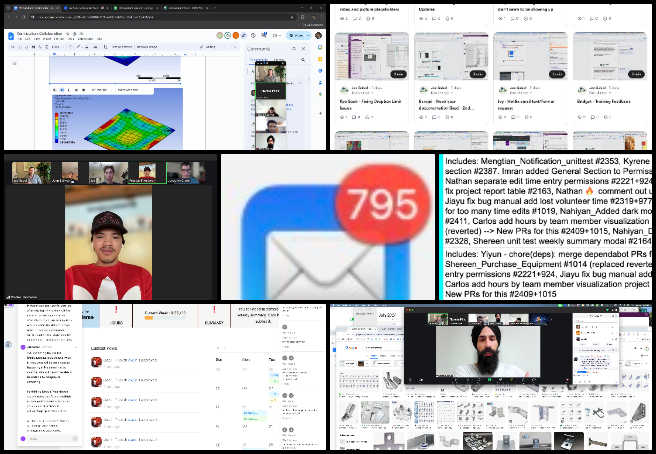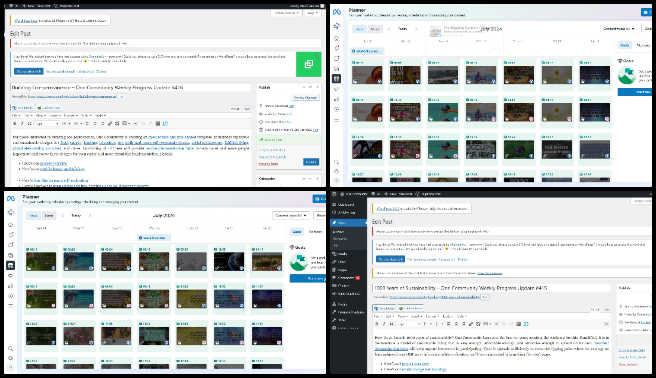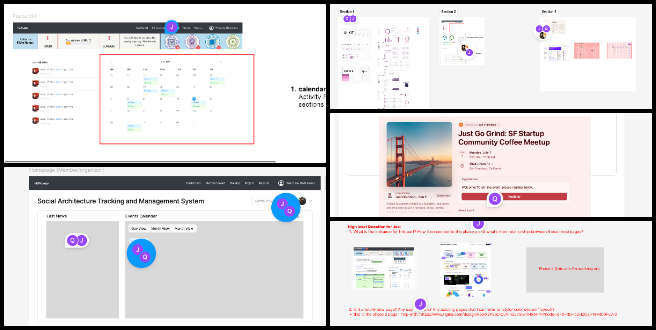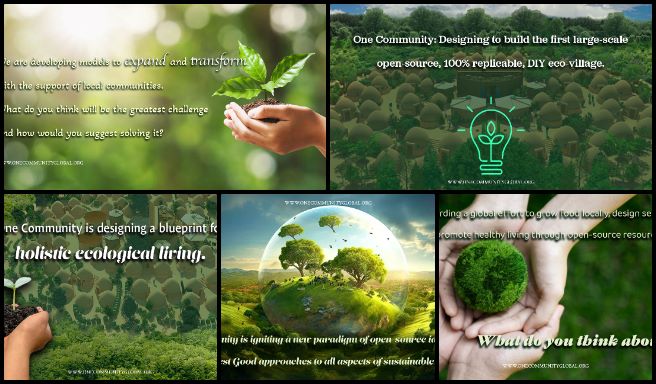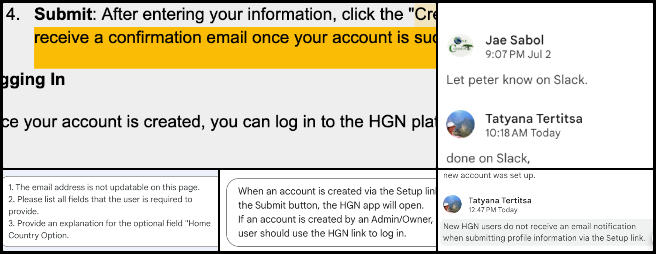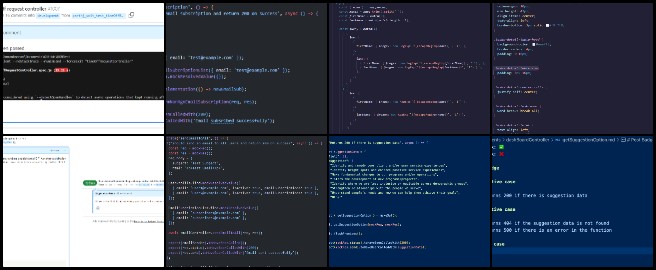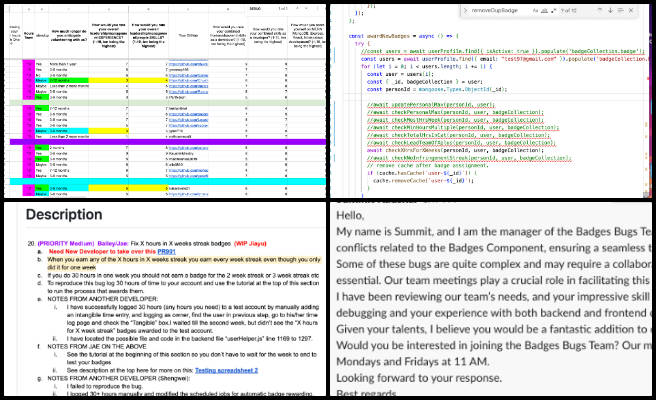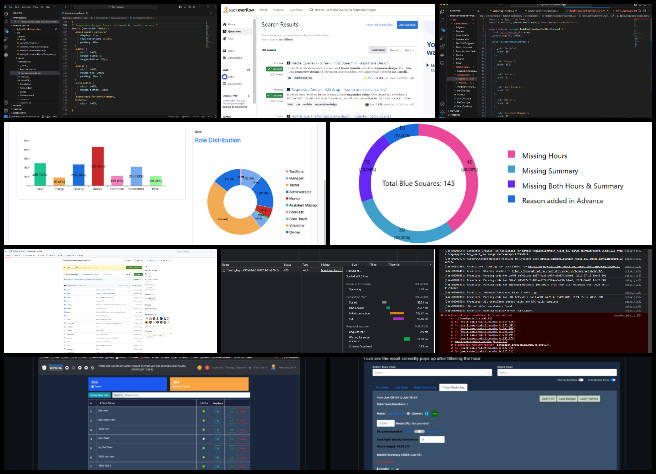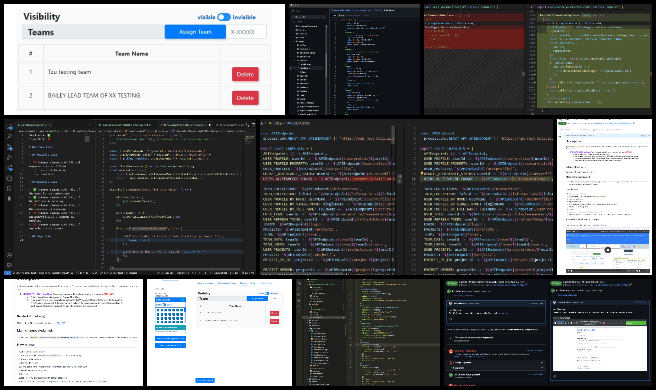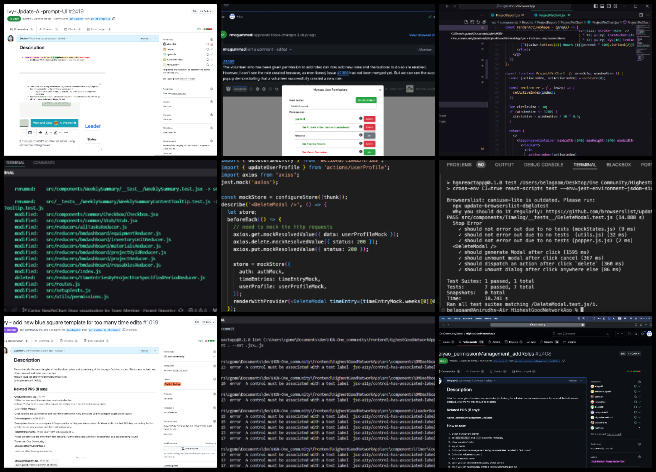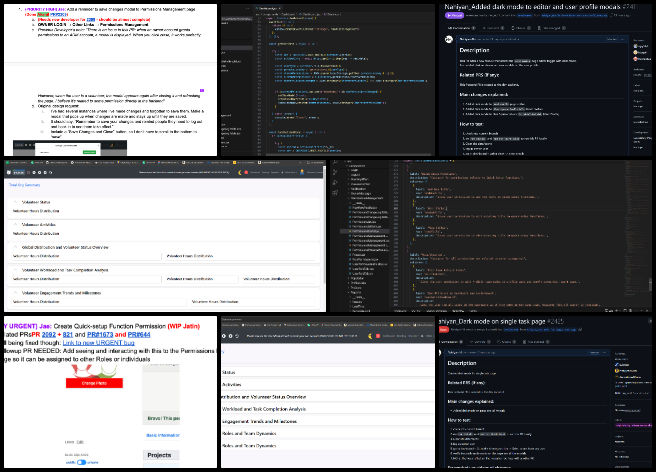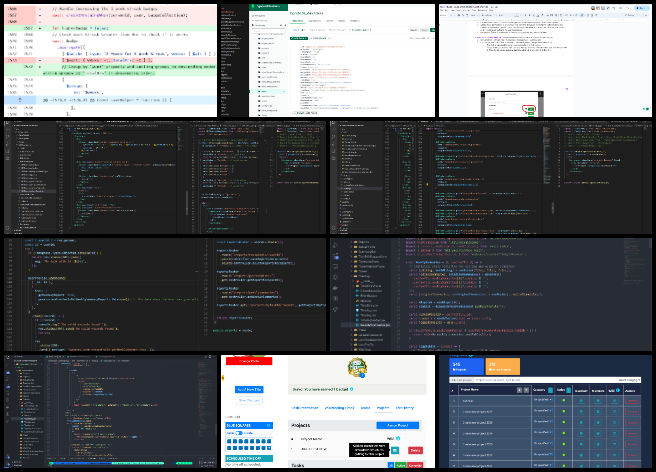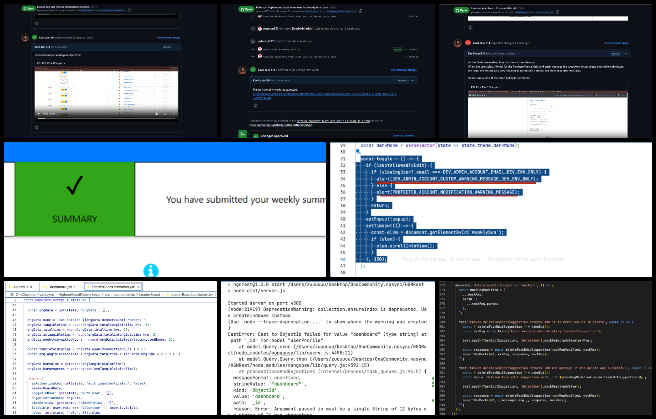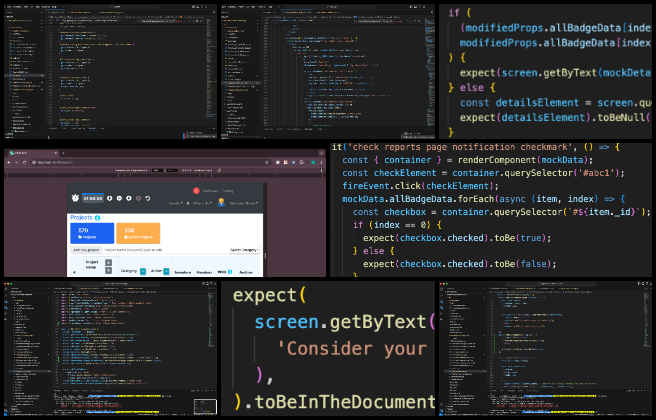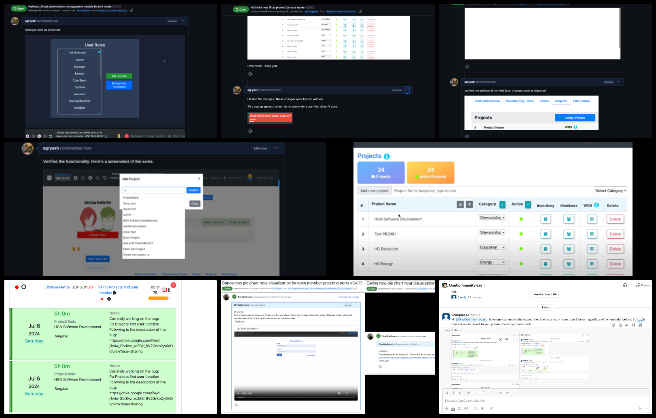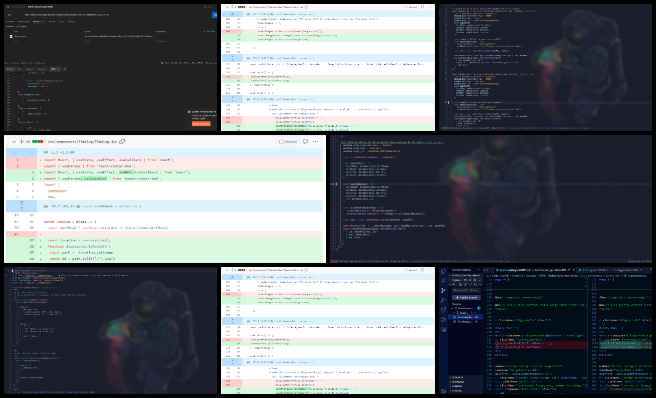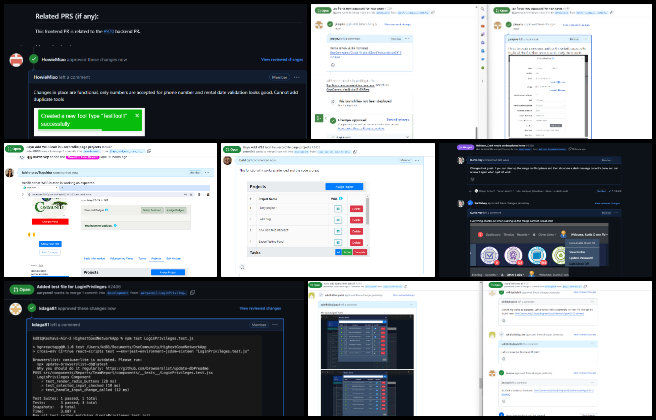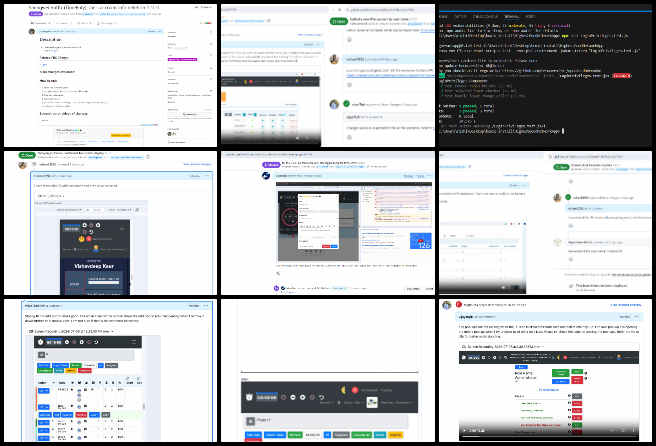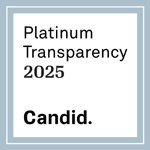Prioritizing Positive Global Change – One Community Weekly Progress Update #590
Prioritizing positive global change is a process of millions of small actions adding up to a very large impact. One Community is supporting this with DIY and sustainable approaches to food, energy, housing, education, for-profit and non-profit economic design, social architecture, fulfilled living, global stewardship practices, and more. These will be able to be implemented as individual solutions or complete teacher/demonstration hubs purposed to teach and demonstrate a more fulfilling and luxuriant life.
- Here’s our project overview
- Here’s our world-change methodology
- Here’s how this becomes self-replicating
- Here’s how we are open source and free-sharing all the do-it-yourself designs
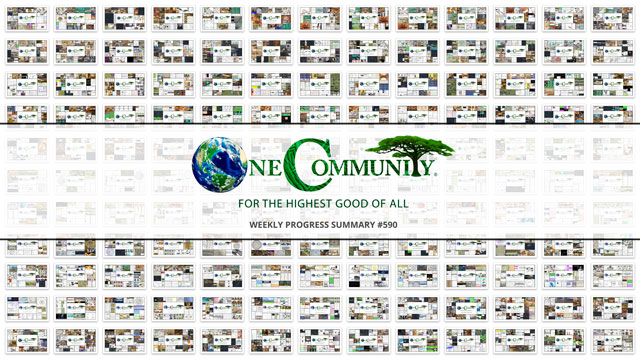
OUR MAIN OPEN SOURCE HUBS
Click on each icon to be taken to the corresponding Highest Good hub page.
One Community’s physical location will forward this movement of prioritizing positive global change as the first of many self-replicating teacher/demonstration communities, villages, and cities to be built around the world. This is the July 8th, 2024 edition (#590) of our weekly progress update detailing our team’s development and accomplishments:
Prioritizing Positive Global Change
One Community Progress Update #590
DONATE | COLLABORATE | HELP WITH LARGE-SCALE FUNDING
CLICK HERE IF YOU’D LIKE TO RECEIVE AN EMAIL EACH WEEK WHEN WE RELEASE A NEW UPDATE
YOU CAN ALSO JOIN US THROUGH SOCIAL MEDIA
ONE COMMUNITY WEEKLY UPDATE DETAILS
HIGHEST GOOD HOUSING PROGRESS
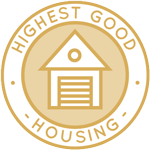 One Community is prioritizing positive global change through Highest Good housing that is artistic and beautiful, more affordable, more space efficient, lasts longer, DIY buildable, and constructed with healthy and sustainable materials:
One Community is prioritizing positive global change through Highest Good housing that is artistic and beautiful, more affordable, more space efficient, lasts longer, DIY buildable, and constructed with healthy and sustainable materials:
- Learn about: Our Upcoming Crowdfunding Campaign
- Learn about the different village models we’re building as part of prioritizing positive global change: 7 Sustainable Village Models
- Visit the open source portals for the first two: Earthbag Village OS Hub | Straw Bale Village OS Hub
This week, Charles Gooley (Web Designer) focused on two pages: The Earthbag Village Tools and Equipmentent and Open Source DIY Earth Dam Design & Construction for Water Retention, Pond & Lake Creation. Charles addressed comments on several pages: Large Scale Gardening, Open Source DIY Permaculture-Design, Most Sustainable Lightbulbs and Light Bulb Companies, and Consensus With Large Groups, focusing primarily on linking images to their full-size versions. Additionally, he downloaded thirty-six images from the master Dropbox file provided by the graphic designer for the recipes pages, replacing existing placeholder images as required. Earth constructions like both of these are an important part of prioritizing positive global change with One Community’s open source plans. See his work in the collage below.
Joseph Osayande (Mechanical Engineer) continued helping finish the Vermiculture Toilet designs. This week, a new idea for the standing system was developed, centered around the unistrut connector channel with a 5-hole piece. This piece is intended to connect the internal and external unistruts, which will form the support system for the foot platform and the winch stand. The design is still in progress, with ongoing analysis to assess its functionality and feasibility. The vermiculture toilets and other sustainable human waste processing technologies form the basis of One Community’s open source model for prioritizing positive global change. See below for some of the pictures related to this work.
Rizwan Syed (Mechanical Engineer) also continued helping finish the Vermiculture Toilet designs. This week, Rizwan performed a modified structural analysis on the rectangular steel plate using ANSYS FEA by incorporating the correct thickness of the steel plate. He calculated the total deformation and maximum Von Mises stress, verifying the results with hand calculations to determine the structural durability of the slider plate. He updated the vermiculture loading spreadsheet by incorporating the latest drawer and chamber dimensions and subtracting the inner volume of the drawer from the main volume. He began summarizing key design accomplishments of the vermiculture eco-toilet design project for the past three months to document them effectively on One Community’s website. Additionally, Rizwan researched design strategies to integrate the unistrut wing connector into the vermiculture assembly for a singular unistrut construct to connect multiple members. The vermiculture toilets and other sustainable human waste processing technologies form the basis of One Community’s open source prioritizing positive global change model. Here are a few photos showing examples of his work.
AIRCRETE TEAM
The Aircrete Testing Team’s summary, covering their work on Aircrete Compression Testing was managed by John Sullivan (CBU Chemical Engineering Student) and includes Tad Matlock (Environmental Science Student). This week, Tad condensed and organized the past trial summaries on the main Aircrete webpage. Most of the summary content is now written and ready for review. He organized the past work into three categories: successes, failures, and general observations, filling out each section with detailed information for future readers. The group was unable to continue trials due to drain issues at the lab, and trials will be paused indefinitely until the drains are fixed. However, some compression tests were performed in the meantime. John edited some videos on the completed trials, which are now published in the Dropbox. These aircrete tests contribute to the housing aspect of One Community’s open source model for prioritizing positive global change. See below for some of the pictures related to this work.
EARTHBAG VILLAGE 4-DOME HOME TEAM
The Earthbag Village 4-dome Home Team was managed by Khushboo Parmar (Project Manager) and includes Michaela Silva (Architect), Adefola Madehin (Electrical Design Specialist), Yusuf Thanawala (Structural Engineer), and Karthik Pillai (Volunteer Mechanical Engineer).This week, Karthik focused on completing the four-dome design and understanding the roof loft structure on the 4-Dome Roof Cluster Team, assembling the domes with assistance from Abhishek’s files and directions from Michaela. He also began learning Revit from the basics to support the team and future projects, uploading all necessary files to Dropbox for team access, and plans to continue building Revit skills and optimizing the design to incorporate Michaela’s proposed updates. Yusuf completed the loft design for a live load of 5 kN/m², leading to a wood joist spacing of 400 mm for a 5-meter span. Observing this spacing to be less than expected, he is investigating how STAAD.Pro analyzes and designs the beam, noting that code checking with respect to American timber construction is automatically performed in STAAD.Pro, which may explain the low joist spacing. Michaela updated the details of doors and archways to align with Earthbag dimensions, assessed code compliance for access to the lofts in the domes, recommended an alternating tread stair for optimal suitability, used Revit to model the dome and proposed stair, and finalized the base floor plan accordingly. Fola completed the socket and panel layout for the Earthbag Village project, placing receptacles in the bedrooms and living room, installing the distribution panel in the living room, and preparing to work on the schematic diagram for the distribution panel using the American standard of single-phase voltage. Khushboo held the 4-Dome Cluster Roof meeting with both engineers to identify blockers and determine what is needed to overcome them, monitored everyone’s progress throughout the week to ensure that the projects are advancing on schedule, and set up an interview with a software engineer to recruit more volunteers. The Earthbag village forms the basis of One Community’s open source model for prioritizing positive global change. See their work in the collage below.
DUPLICABLE CITY CENTER PROGRESS
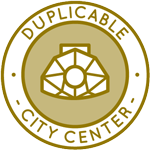 One Community is prioritizing positive global change through a Duplicable and Sustainable City Center that is LEED Platinum certified/Sustainable, can feed 200 people at a time, provide laundry for over 300 people, is beautiful, spacious, and saves resources, money, and space:
One Community is prioritizing positive global change through a Duplicable and Sustainable City Center that is LEED Platinum certified/Sustainable, can feed 200 people at a time, provide laundry for over 300 people, is beautiful, spacious, and saves resources, money, and space:
- Learn about this building and it’s function as part of One Community’s model for prioritizing positive global change: Duplicable City Center Open Source Hub
This week, Chris Blair (GIS Technician/Horticulturist) continued working with GIS data as part of One Community’s Permaculture Design. In preparation of creating a tutorial, he reviewed Ben Missimer’s YouTube channel to recreate the workflow presented in his videos and checked the availability and relevance of the online resources. Additionally, he revised content for slope analysis to be added to the Permaculture Design webpage. Proper property modeling and understanding is a foundational part of One Community’s open source prioritizing positive global change model. Here are a few photos showing examples of his work.
Clarice Gaw Gonzalo (Architect) continued her work with the Duplicable City Center room designs. This week, Clarice concentrated on enhancing the themed rooms, specifically the Tea Room and the Neofuturistic Room. Her tasks included adjusting the lighting and views to improve ambiance and realism. She populated these spaces with a diverse group of people to better represent a range of users and added various clutter items like clothes, plants, and pillows to create a more lived-in feel. In addition to these modifications, Clarice ensured that each room’s unique theme was maintained while integrating the new elements. She is now working on completing the last few rooms, making similar adjustments as needed, before redirecting her focus back to the main building. The City Center will be built along with the first of the 7 villages as part of One Community’s open source model for prioritizing positive global change. See some of this work in the collage below.
Nika Gavran (Industrial Designer) continued her work on the Duplicable City Center dormer window installation plans. This week, Nika focused on advancing the dormer window assembly instructions, with her main objective being to enhance the stability of the structure through the implementation of screws and fasteners. She added more screws to the new structure, which now includes increased rock wool insulation. Nika updated the CAD model with the new screws and took screenshots highlighting their placement in light blue. The Duplicable City Center is a foundational part of One Community’s open source prioritizing positive global change model. See below for some of the pictures related to this work.
HIGHEST GOOD FOOD PROGRESS
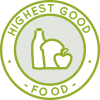 One Community is prioritizing positive global change through Highest Good food that is more diverse, more nutritious, locally grown and sustainable, and part of our open source botanical garden model to support and share bio-diversity:
One Community is prioritizing positive global change through Highest Good food that is more diverse, more nutritious, locally grown and sustainable, and part of our open source botanical garden model to support and share bio-diversity:
- Learn about the structures we’ll build first as part of this model for prioritizing positive global change: Hoop House Hub | Aquapini & Walipini Open Source Hub
- See what we’ll be growing first as part of this model for prioritizing positive global change: Gardens & Hoop Houses | Large-scale Structures | Food Forest | TA
This week, the core team continued updating and expanding the Highest Good Food tools, equipment, materials, and supplies document by adding new items and breaking down the categorization of tools and equipment into powered and non-powered. They further separated some of these entities into new categories and answered questions on the food doc from another reviewer. Highest Good Food is an important part of prioritizing positive global change with One Community’s open source plans. See their work in the collage below.
Hayley Rosario (Sustainability Research Assistant) continued to update the Highest Good Food page, focusing primarily on the “Garden Establishment and No-Till” section. Her tasks included formatting all lists and paragraphs within this section. She integrated links into those various lists, which contained extensive collections of organized plants, ensuring each plant list was linked appropriately. Additionally, she made updates to sections on Hoop House Construction, Soil Amendment, and Worms and Vermiculture. Highest Good food is an important part of prioritizing positive global change with One Community’s open source plans. See her work in the collage below.
HIGHEST GOOD EDUCATION PROGRESS
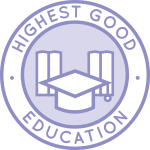 One Community is prioritizing positive global change through Highest Good education that is for all ages, applicable in any environment, adaptable to individual needs, far exceeds traditional education standards, and more fun for both the teachers and the students. This component of One Community is about 95% complete with only the Open Source School Licensing and Ultimate Classroom construction and assembly details remaining to be finished. With over 8 years of work invested in the process, the sections below are all complete until we move onto the property and continue the development and open sourcing process with teachers and students – a development process that is built directly into the structure of the education program and everything else we’re creating too:
One Community is prioritizing positive global change through Highest Good education that is for all ages, applicable in any environment, adaptable to individual needs, far exceeds traditional education standards, and more fun for both the teachers and the students. This component of One Community is about 95% complete with only the Open Source School Licensing and Ultimate Classroom construction and assembly details remaining to be finished. With over 8 years of work invested in the process, the sections below are all complete until we move onto the property and continue the development and open sourcing process with teachers and students – a development process that is built directly into the structure of the education program and everything else we’re creating too:
- Program Overview: Prioritizing Positive Global Change Education Open Source Hub
- How the components work together: How to use the Education for Life Program
- Prioritizing positive global change: Lesson Plans for Life – Lesson Plans How-to
- Foundations of Outstanding Leaders, Teachers, and Communicators interested in prioritizing positive global change
- Curriculum for Life and prioritizing positive global change
- Teaching Strategies for Life
- Learning Tools and Toys for Life
- Evaluation and Evolution
This week, Apoorv Pandey (Mechanical Engineer) continued helping with the engineering details for The Ultimate Classroom part of the Highest Good Education component. He began working on a new title block design according to recent guidelines and developments. He plans to include both his self-researched title block and the new design in the documentation report. Specifically, Apoorv is improving the layout of the cover sheet to include all necessary details for providing a brief overview of the Ultimate Classroom project. He is collaborating with fellow engineers to review and update calculations for the project’s roof and truss. The One Community model of combining forward-thinking education with sustainably built classrooms like this are an excellent example of prioritizing positive global change. See the collage below for their work.
Brian Mwoyowatidi (Graduate Structural Engineer) continued helping with the engineering details for The Ultimate Classroom part of the Highest Good Education component. He learned and utilized STAAD.Pro Foundations to model and analyze the isolated footings for the Ultimate Classroom. His task included inputting relevant project information, column geometry and dimensions, creating load cases, adding column reactions and soil bearing capacity, incorporating self-weight and design parameters, and completing the analysis and design. His work, including the AutoCAD detail drawing, AutoCAD GA drawing, schedule drawing, and detailed calculation report for the Ultimate Classroom tutorial and report, researching relevant references and building an outline. From this outline, he has covered the project overview, objectives, summary of relevant codes, compliance strategy, foundation design (particularly footers), and flooring design, including material selection, floor insulation, and installation process. The One Community model of combining forward-thinking education with sustainably built classrooms like this are an excellent example of prioritizing positive global change. See the collage below for their work.
HIGHEST GOOD SOCIETY PROGRESS
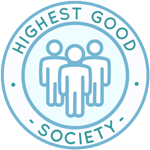 One Community is prioritizing positive global change through a Highest Good society approach to living that is founded on fulfilled living, the study of meeting human needs, Community, and making a difference in the world:
One Community is prioritizing positive global change through a Highest Good society approach to living that is founded on fulfilled living, the study of meeting human needs, Community, and making a difference in the world:
- Read the Highest Good society overview and how it relates to prioritizing positive global change: Highest Good Society
- Learn about the model for fulfilled living and sharing: A Day in the Life
- Learn about the 4 economic models for prioritizing positive global change: RBE | For-profit | Non-profit | Entrepreneurship
This week, the core team completed over 50 hours managing One Community’s volunteer-work review not included above, emails, social media accounts, web development, new bug identification and bug-fix integration for the Highest Good Network software, and interviewing and getting set up new volunteer team members. They also shot and incorporated the video above that talks about prioritizing positive global change and how prioritizing positive global change is a foundation of the bigger picture of everything One Community is doing. The picture below shows some of this work.
Arun Chandar Ganesan (Volunteer Data Analyst and SEO and Social Media Assistant) continued working on webpages, focusing on the SEO efforts completed by other volunteers, including some that had previously been abandoned, and improving the scores of his previous pages. He also oversaw and coordinated the scheduling of posts on One Community’s social media channels, which included Facebook, Instagram, and LinkedIn. His work on social media helps One Community to broaden our reach and spread our message about prioritizing positive global change. The following images show his work for the week.
Jiaqi Wu (UX Designer) worked on Phase 3 of the Highest Good Network. She referred to three different user groups and their respective user flows to create the first draft. She considered making the calendar the main component, creating two versions: one for community members and one for organizers. Jiaqi also created the event detail page. This work Jiaqi is doing on Highest Good Network is an excellent example of prioritizing positive global change. Below is a collage of her work.
ADMINISTRATION TEAM
The Administration Team’s summary, covering their work administrating and managing most of One Community’s ongoing process for prioritizing positive global change was managed by Sneka Vetriappan (Data Analyst) and includes Durgeshwari Naikwade (Data Analyst), Jessica Fairbanks (Administrative Assistant), Jim Zhang (Administrative Assistant), Kishan Sivakumar (Administative Assistant and Software Team Manager), Michael Juma (Administrative Assistant), Olawunmi “Ola” Ijisesan (Administrative and Management Support), Rachna Malav (Data Analyst), Ruiqi Liu (Administrative Assistant), T R Samarth Urs (Data Analyst), Vibhav Chimatapu (Data Analyst/Admin Assistant) and Zuqi Li (Administrative Assistant and Economic Analyst). This week, Durgeshwari updated the first draft of the HGN Phase 3 deliverable tracking table and handled interviews for software development and admin teams. Jessica reviewed and provided feedback on new administrators’ training, interviewed a potential volunteer, and organized her Dropbox folders. Jim did his part prioritizing positive global change as he continued research on ESG investing strategies and their integration into portfolio construction models. Kishan focused on SEO optimization efforts and discussed admin onboarding with Jae. Juma began his administrative assistant role, managing collaboration documents and team summaries, among other tasks. Ola managed online content, scheduled posts, and organized workspace elements. Rachna did her part prioritizing positive global change as she oversaw software development teams, handled interviews, and focused on SEO pages. Ruiqi completed reviews for multiple teams and assisted in publishing bio announcements. Sneka worked on SEO optimization, time log management, and reviewed team content. Samarth managed a PR review team, evaluated their work, and summarized their efforts in a blog post. Vibhav reviewed PR team submissions, created group summaries, and optimized web page SEO. Zuqi organized summaries for various teams, reviewed blog optimizations, and fixed blog attributes. One Community’s model for prioritizing positive global change includes developing and maintaining a supportive administration team like this. You can see the work for the team in the image below.
GRAPHIC DESIGN TEAM
The Graphic Design Team’s summary was managed by Zuqi Li (Administrative Assistant and Economic Analyst) and included Ashlesha Navale (Graphic Designer), covering their work on graphic designs for prioritizing positive global change. This week Ashlesha worked on making changes in the Treehouse Village book-pages 36, 37, 38 and 39 and uploaded the Indesign Book file and created PDF file too. Additionally, she researched and curated a collection of nature-based background images and different theme-based images for creating Social Media Images and created five social media images. See the Highest Good Society pages for more on how this contributes to prioritizing positive global change. See the collage below to view some of their work.
HIGHEST GOOD NETWORK PROGRESS
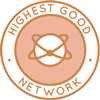 One Community is prioritizing positive global change through open source Highest Good Network® software that is a web-based application for collaboration, time tracking, and objective data collection. The purpose of the Highest Good Network is to provide software for internal operations and external cooperation. It is being designed for global use in support of the different countries and communities replicating the One Community sustainable village models and related components.
One Community is prioritizing positive global change through open source Highest Good Network® software that is a web-based application for collaboration, time tracking, and objective data collection. The purpose of the Highest Good Network is to provide software for internal operations and external cooperation. It is being designed for global use in support of the different countries and communities replicating the One Community sustainable village models and related components.
- Learn about our open source community collaboration and management software designed for measuring our results as we are prioritizing positive global change: The Highest Good Network
This week, the core team continued their work on the Highest Good Network PRs testing, confirming the fixed PRs. They focused on HGN PR testing, confirming fixes for edit time entry tracking and the blue square function (PR2131), enhancing the protected account activity warning feature, and resolving a mentor summary setting issue (PR2317). Additional fixes included addressing a white screen issue in the Teams section and creating a way to reorder User Suggestion Categories (PR1913) on the Dev environment. They identified unfixed issues like the “Hours by Team Member” visualization on the Projects Reports page and setting users’ status to “rehireable” by default (2367). The team also worked on improving the admin/owner users’ ability to approve suggested changes on tasks, tested related features, recorded explanatory videos, and set up a case for testing a new scheduled-on date feature (FE2009/BE779). They reviewed the Highest Good Network User’s Manual, updating images for the Dashboard menu bar, timer buttons, and theme options, and commented on the Profile page text. See the Highest Good Society and Highest Good Network pages for more on how this relates to prioritizing positive global change. The collage below shows some of their work.
ALPHA SOFTWARE DEVELOPMENT TEAM
The Alpha Team’s summary, covering their work on the Highest Good Network software was managed by Lin Khant Htel (Frontend Software Developer) and includes Jordy Corporan (Software Engineer), Logeshwari Renu (Software Engineer) and Nathalia Mesquita Carnevalli (Full Stack Software Developer). The Highest Good Network software is how we will manage and measure our processes for prioritizing positive global change across our social architecture, construction, production, and maintenance processes. Lin worked on unit testing for the DashboardController, focusing on the getSuggestionOption function. He also reviewed the weekly summaries, photos, and videos of his team Alpha members. Jordy advanced unit tests for both the popupEditorController and the emailController, working to ensure these tests are robust. He aimed to complete these tasks and push the updates to the repository to maintain project momentum. Nathalia addressed several bugs in the pull request for “Search Projects By Person” and completed the task “Fix PROJECT REPORT UI issues for 375px and up,” resolving problems with overlapping tasks table header items, dark mode stub placeholder appearance, title element order for screens 815px or below, and table responsiveness. Logeshwari did her part prioritizing positive global change as she reviewed five pull requests and contributed to frontend development for resolving issues in the HGN Software Development web application. She tested pull requests #PR2401 and #PR1010, ensuring compatibility with special characters, numbers, and alphabets within a defined range for Team codes, and added a “Select All with no Team code” option in the dropdown. Logeshwari ensured all test cases passed for pull requests #PR1007, #PR2406, and #PR2407. She transitioned to development tasks, addressing the “handleModalOpen is not defined” error by implementing changes in the PermissionsManagement component and initiated pull request #PR2420 titled “Logeshwari_Fix_Role_’i’_icons_top_of_Permissions_Management”. See the Highest Good Society and Highest Good Network pages for more on how this relates to prioritizing positive global change. View some of the team’s work in the collage below.
BADGES BUGS SOFTWARE DEVELOPMENT TEAM
The Badges Bugs Team’s summary overseeing advancements in the Highest Good Network software was managed by Summit Kaushal (Backend Software Developer). The Highest Good Network software is how we’ll be managing and objectively measuring our process for prioritizing positive global change through our social architecture, construction, production, and maintenance processes. This week, Summit navigated through the team document to identify potential team members, creating lists based on coding skills, debugging proficiency, and database expertise, with an additional focus on Azure skills. Separate lists were created for members with varying ratings: those ranging from 6 to 9, indicating strong skills in one area but lower in another, and those who rated themselves between 5 and 6. Summit did his part prioritizing positive global change as he prioritized adding individuals with higher ratings to the list but also considered those with lower ratings. A recruitment letter was modified to include information previously mentioned by Jae, and messages were sent via Slack to individuals with skill ratings of 9-10. Several recruiting messages were sent, resulting in two members expressing interest in joining the team, and shared documents were sent, notifying Jae of these potential team members. Summit encountered an issue with Postman while reviewing PR 996 and reviewed the Postman API documentation to understand the problem better. Attempts to resolve the issue involved checking the code for potential issues related to routes and controllers, verifying the GET URL in Postman, and modifying the route, though the changes had no effect. A debug video was also reviewed to assist in resolving the issue. See the Highest Good Society and Highest Good Network pages for more on how this relates to prioritizing positive global change. View some of the team’s work in the collage below.
BINARY BRIGADE SOFTWARE DEVELOPMENT TEAM
The Binary Brigade Team’s summary overseeing advancements in the Highest Good Network software was managed by Min Sun (Software Engineer) and includes Aaryaneil Nimbalkar (Software Developer), Deepthi Kannan (Software Engineer), Huijie Liu (Software Engineer), Peizhou Zhang (Software Engineer), Sai Sarath Kumar Alavakonda (Software Engineer), Sandhya Adavikolanu (Software Developer) and Sri Sudersan Thopey Ganesh (Software Engineer). The Highest Good Network software is how we’ll be managing and objectively measuring our process for prioritizing positive global change through our social architecture, construction, production, and maintenance processes.
This week, Aaryaneil added unit test cases for the WeeklySummaryOptions component, testing rendering summary options, handling user profile changes, and setting the default value to required. Work on unit tests for the VolunteeringTimeTab component was initiated, and research on hosting options for the HGN app was done, including a review of BlueHost and its alternatives. Comparisons between BlueHost and A2 Hosting were made, and a report compiling reviews from various sources on all hosting providers was created for Jae. Deepthi did her part prioritizing positive global change as she focused on fixing UI issues for the send emails page, ensuring functionality across dimensions from 375px to 800px. She updated Announcements.css by adding media queries, adjusted the component structure and styles in index.jsx, and verified the design across multiple breakpoints. She wrote the final code, tested it on the local host website, created PR 2426, and documented the changes with videos and snapshots. Deepthi worked with Prashanth on the user manual and coordinated with Min Sun for the manager in training role. Earlier, she faced errors while opening the app through the local host and sought assistance. Huijie continued working on the work distribution bar chart component, modifying her code based on backend and frontend updates for the total organization summary page, and performed tests on the fix time match task.
Min did his part prioritizing positive global change as he continued working on Task 717, creating methods to retrieve userId for team members and a method to retrieve partial userProfile. After realizing performance issues, he decided to create more backend endpoints to improve performance. Min also approved PR2410, 1007, 981, 2391, 2407, 2416, 2402, 2419, hosted the weekly meeting, reviewed team reports, proofread, and submitted the team summary. Peizhou wrapped up the work on the page refresh efficiency issue and created a pull request for other developers to review and follow up. He also began addressing a new task related to the team report page turning bright and did research to find a solution for this issue. Peizhou did his part prioritizing positive global change as he wrapped up the work on the page refresh efficiency issue and created a pull request for other developers to review and follow up. He also began addressing a new task related to the team report page turning bright and did research to find a solution for this issue. Sai gained access to the One Community HGN git repository after contacting Jae. A high-priority bug on the Teams page in the admin/owner interface was debugged, identifying the file causing UI issues at various dimensions. A new CSS file, TeamsOverview.css, was created and implemented to ensure responsive design, preventing cards from stacking vertically. Clarifications were sought from Nahiyan, and after obtaining git access, the changes were committed, and a new pull request (#2416) was created. The work, including screenshots and recordings, was compiled into a PDF document and uploaded to the shared Dropbox folder.
Sandhya made progress on the HGN Software Development project. She started by creating a pull request to merge her feature branch into the weekly-volunteer-summary-dashboard branch, ensuring that all recent changes were integrated into the main branch. Sandhya also addressed issues related to the “Share as PDF” feature on the Total Org Summary webpage. She took over the tasks related to analyzing the task completed bar chart and the testing dashboard, delving deeply into the problem statements to identify potential issues and areas for improvement. Sandhya did her part prioritizing positive global change as she had a productive meeting with Harsh, where they reviewed the progress and discussed the upcoming tasks and strategies for the project. They identified key areas that needed immediate attention and formulated a plan to address them. Sri developed the Blue Square Stats component for the Total Org Summary Dashboard, designing the DonutChart component, a React functional component, to render an interactive donut chart using D3.js for data visualization. React hooks like useRef and useEffect managed SVG rendering and updates. The component used D3 functions such as pieGenerator and arcGenerator to calculate pie slices and arc shapes based on data, while colorScale mapped colors to data labels. Interactive features included hover effects on arcs, and text labels inside arcs displayed numerical values and percentages. A legend enhanced clarity by associating colors with data categories. Sri pushed all related code to the feature branch, sri/blue-square-stats. See the Highest Good Society and Highest Good Network pages for more on how this relates to prioritizing positive global change. View some of the team’s work in the collage below.
BLUE STEEL SOFTWARE DEVELOPMENT TEAM
The Blue Steel Team’s summary, presenting their work on the Highest Good Network software was managed by Jingyi Jia (Software Engineer, Team Manager), and includes Bhuvan Dama (Full stack Developer), Jay Srinivasan (Software Engineer), Parth Rasu Jangid (Software Developer), Ramakrishna Aruva (Software Engineer), and Tzu Ning “Leo” Chueh (Software Engineer). The Highest Good Network software is how we’ll be managing and objectively measuring our process for prioritizing positive global change through our social architecture, construction, production, and maintenance processes. This week, Jay reviewed weekly summaries and media folders for Team Blue Steel, completed work on the force new password issue, and submitted two PRs for the corresponding frontend and backend changes. He also tackled a new issue with unit tests for the SameFolderTasks component, encountering challenges with the mock adapter’s handling of component requests. Ramakrishna focused on enhancing the replace code function, creating a state to capture selected IDs efficiently and implemented a regex for the replaceTeamCode functionality. He did his part prioritizing positive global change as he completed frontend tasks by creating an API endpoint and implementing an Axios patch call. On the backend, he developed Express.js routers and updated values using Mongoose schemas but faced a “Bad Request” error which is still under resolution. Bhuvan developed a test suite for picker components, which failed to build. He also resolved code pulling issues and created test cases for the TableFilter.jsx file, focusing on fixing build crashes. Tzu Ning refined team management functionality, ensuring constant functionality of “Assign Team” and “Delete” buttons and integrating toast notifications for better user feedback. Parth reviewed four pull requests (PRs 970+2306, 1015+2409, 2276, 2408) and began writing unit tests for the timeZoneAPIController, aiming to complete them within a set timeframe. He also revisited his pull request 962 to aid its integration and assisted Luis with debugging his unit tests. See the Highest Good Society and the Highest Good Network pages to learn more on how their work contributes to prioritizing positive global change. See below to view images of their work.
CODE CRAFTERS SOFTWARE DEVELOPMENT TEAM
The Code Crafters Team’s summary, covering their work on the Highest Good Network software, was managed by Anirudh Ghildiyal (Software Engineer) and includes Carlos Gomez (Full-stack Software Developer), Weiyao Li (Software Engineer) and Xiaoyu Chen (Software Engineer). The Highest Good Network software is how we’ll manage and objectively measure our process for prioritizing positive global change through our social architecture, construction, production, and maintenance processes. Xiaoyu addressed styling problems based on Jae’s feedback and assisted Vigneshwar Muriki with login issues in the hgnapp. Updates were made to fix styling issues and test account permission problems, and the previously complicated schema was removed based on a reuse AI prompt model. Carlos began addressing Jae’s request regarding Jiayu Huang’s feedback on Frontend PR 2310, which needed reversion due to outdated code. After making the necessary changes, he created and pushed a new branch named Carlos_NewPieChart_Hour_visualization_by_Team_Member__Project_Reports in both Frontend and Backend. In the weekly-summary-dashboard team (WSDT), Carlos refactored Total Org Summary.jsx and Volunteer Hours Distribution.jsx by rebuilding the work layout using Bootstrap classes and grids, and created FPR-2414 to enhance the initial work layout, with potential scalability to other modules on the page. He also worked on resolving requested changes in FPR2409 to improve the UI in dark mode.
Weiyao worked on the “add roles” feature, which required edit access to create roles with permissions. He also learned React, Redux, and testing concepts. Anirudh completed the DeleteModal test case and sent it for review, as well as finished working on the SingleTask, which has been sent for final review and will soon be merged. Anirudh did his part prioritizing positive global change as he made changes and checked two PRs, sending them for final review. Additionally, he took updates from teammates about their prolonged tasks, assisted them in resolving issues, and connected them with other teammates to expedite the problem-solving process. See the Highest Good Society and Highest Good Network pages for more on how this relates to prioritizing positive global change. The collage below shows some of this work.
DEV DYNASTY SOFTWARE DEVELOPMENT TEAM
The Dev Dynasty Team’s summary, covering their work on the Highest Good Network software, was managed by Nahiyan Ahmed (Full Stack Software Developer) and includes Akshit Sharma (Software Engineer), Harsh Bodgal (Software Engineer). and Jatin Agrawal (Software Engineer). The Highest Good Network software is how we’ll manage and objectively measure our process for prioritizing positive global change through our social architecture, construction, production, and maintenance processes. Nahiyan resolved several issues in the dashboard optimization for the mobile display PR by adjusting font sizes and dimensions of specific items to enhance responsiveness. He also addressed dark mode issues, ensuring that the editor within the send emails page and certain user profile models transitioned properly to dark mode. Additionally, Nahiyan worked on PR 2411 to implement dark mode for user profile models and PR 2425 to apply dark mode to a single task page accessible from the dashboard.
Akshit fixed the issue of new people added to projects not appearing as resources and resolving UI problems on the people report page for screens 375px and larger. He did his part prioritizing positive global change as he analyzed the code and modified the UserProjectsTable.jsx file, resulting in the resolution of the bug and ensuring new project members were displayed as resources, leading to the creation of PR 2418. He was also involved in redesigning elements to improve the UI of the people report page. Jatin addressed PRs 2164, 2392, 2416, 2412, 2409, 2408, 2407, 2389, 2418, and 2417. He also worked on PR 2374, created to resolve requests from contributors. Harsh completed the accordion component and submitted a pull request for integration into the TotalOrgSummary page, adhering to design specifications by writing CSS. See the Highest Good Society and Highest Good Network pages for more on how this relates to prioritizing positive global change. The collage below shows some of this work.
EXPRESSERS SOFTWARE DEVELOPMENT TEAM
The Expressers Team’s summary, covering their work on the Highest Good Network software, was managed by Shereen Punnassery (Full Stack Software Engineer) and includes Christy Guo (Software Engineer), Jiayu Huang (Software Engineer), Kaushik Malikireddy (Full Stack Developer Intern), KyoSook Shin (Software Engineer), and Mohammad Abbas (Software Engineer). The Highest Good Network software is how we’ll manage and objectively measure our process for prioritizing positive global change through our social architecture, construction, production, and maintenance processes.
Christy focused on implementing the backend for Hour Task Visualization and worked on resolving the error message when configuring API routing to fetch project and related task information, aiming to fix those API endpoints to ensure seamless data retrieval. KyoSook worked on frontend development, including adding a stopwatch function and a pause toggle button, improving the appearance of the stopwatch, identifying and fixing an issue with backend communication related to BMTimeLogProjectDetails rendering, and addressing a Dropbox access issue by requesting Jae to delete the account created as a 30-day trial and recreate it as a basic account. Kyo Sook also worked on creating a bio for the OneCommunity web page and on backend efforts to extract the taskName for each user by sending separate signals to the server due to latency issues, necessitating additional signals to update members’ hours when the stopwatch is stopped.
Shereen worked on the Equipment List View component to fix a sorting issue, addressed the Bulk Reusables Update component to resolve problems with ‘Used’ and ‘Wasted’ fields, fixed issues related to form validation for the Telephone Number and Rental To Date fields in the Add Tool component, and performed unit testing for the Weekly Summary Modal, including adding a new test case for the toggle feature. Kaushik reviewed 13 PRs, assisted fellow volunteers on Slack with resolving bugs, and familiarized himself with the managerial process for submitting the team’s weekly summaries. Jiayu created a new pull request for implementing a limit see-all option for teams, resolved merge conflicts, modified the logic for displaying the limit see-all toggle, fixed a bug, and added a loading state for fetching team members to prevent the display of previous team members for new teams. Jiayu did her part prioritizing positive global change as she also began work on adding a standard time entry and description for “add lost time” time logs along with associated testing.
Mohammad focused on identifying and resolving issues to improve the project’s functionality. KyoSook identified and fixed an issue with backend communication; the error was due to improper rendering of BMTimeLogProjectDetails linked with the `/bmdashboard/timelogger/` path, and additional lines were added to ensure proper rendering. On the backend, KyoSook extracted the taskName for each user, which required sending separate signals to the server due to latency issues in retrieving taskName from the Task model. See the Highest Good Society and Highest Good Network pages for more on how this relates to prioritizing positive global change. See the collage below for the team’s work this week.
GIT-R-DONE SOFTWARE DEVELOPMENT TEAM
The Git-R-Done Team’s summary, covering their work on the Highest Good Network software includes Kavil Rajendra Jain (Software Developer), Sushmitha Prathap (Software Developer) and Youyou Zhang (Software Developer). The Highest Good Network software is how we’ll be managing and objectively measuring our process for prioritizing positive global change across our social architecture, construction, production, and maintenance processes. This week, Kavil worked on reviewing five pull requests: PR 2306 – 970, PR 2310, PR 2332, PR 2343, and PR 2359 – 992.
Sushmitha contributed to prioritizing positive global change as she reviewed the work of team members that was ready for review and then went through the individual summaries. Following this, Sushmitha worked on creating a pull request for the projectController and resumed work on the TaskController file. Additionally, she worked on unit tests for the taskEditSuggestion controller, handling all the cases.
Youyou reviewed the Google Doc containing unsolved bugs and claimed a task aimed at allowing a larger margin around certain icons to prevent overlapping with longer text. She began working on the task but encountered issues with the backend development branch, where errors occurred upon loading the frontend dashboard. This problem has hindered the development process since testing the frontend is difficult without a functioning backend. See the Highest Good Society and Highest Good Network pages for more on how this relates to prioritizing positive global change. See the collage below for the team’s work this week.
MOONFALL SOFTWARE DEVELOPMENT TEAM
The Moonfall Team’s summary, covering their work on the Highest Good Network software was managed by Lu Wang (Software Engineer) and includes Abdelmounaim “Abdel” Lallouache (Software Developer), Shrada Chellasamiand (Software Engineer) and Yili Sun (Software Engineer). The Highest Good Network software is how we’ll be managing and objectively measuring our process for prioritizing positive global change across our social architecture, construction, production, and maintenance processes. This week, Abdelmounaim resolved an issue where users who had never logged time and been active for more than one week did not receive blue squares, submitting PR 1022. He also fixed the style of the follow-up button and the task board table on small screens, ensuring the table header was properly aligned and that the table collapsed correctly on smaller devices. Additionally, he troubleshooted the map location functionality for new users.
Lu did her part prioritizing positive global change as she focused on writing and fixing unit tests for the PeopleReport/components/PeopleTasksPieChart.jsx component. She redesigned the test cases for selector functions to ensure they accurately filter and process data according to the latest requirements. Lu also addressed and fixed issues related to rendering and data binding in the chart by improving the performance and visual accuracy. She rewrote the test cases to cover more edge cases and improve test coverage, especially handling errors related to state management and asynchronous data handling. Additionally, Lu handled her assistant team management duties, which included writing the weekly report, reviewing teammates’ work, and collecting the best two pictures of work from teammates.
Shrada completed the previous task and reviewed the PR, resolving all suggested changes. She took on a new task and completed three parts of it, focusing on the loading screen to ensure the spinning circle is displayed in the center alongside the loaded projects instead of on the left side. Additionally, Shrada addressed layout issues, including adjusting the right margin at 991px and below to match the left margin and aligning the up and down arrows in the second column at the same resolution.
Yili fixed the incorrect information in the pop-ups for Permissions Management info icons, tested the changes locally to ensure everything was working correctly, and created a pull request on GitHub. Additionally, Yili worked on the new task to fix User Management Page UI issues, testing the bugs on the development branch to verify their existence and understand their impact. See the Highest Good Society and Highest Good Network pages for more on how this relates to prioritizing positive global change. See the collage below for the team’s work this week.
REACTONAUTS SOFTWARE DEVELOPMENT TEAM
The Reactonauts Team’s summary, covering their work on the Highest Good Network software was managed by Changhao Li (Software Engineer) and includes Dhairya Mehta (Software Engineer), Diya Wadhwani (Software Developer), Hetvi Patel (Software Engineer), Hoang Pham (Software Developer), Peterson Rodrigues dos Santos (Full-Stack MERN Stack Developer), Vijeth Venkatesha (Full Stack Developer) and Yash Agrawal (Software Engineer). The Highest Good Network software is how we’ll be managing and objectively measuring our process for prioritizing positive global change across our social architecture, construction, production, and maintenance processes. This week, Changhao focused on team management, unit test development, and assisting new team members. He hosted the weekly team meeting to review progress and addressed questions from new members, set up the weekly team pic folder for progress uploads, and reminded the team to upload on time via Slack. He also read and summarized individual weekly summaries from team members and reviewed development documents and functions for timeentry.jsx, continuing work on the unit test file.
Dhairya addressed the “Fix Projects find user function” task, identifying the root cause of the issue affecting user discovery within the projects section and developing a sort and search function to optimize user assignment processes.
Diya did her part prioritizing positive global change as she worked on fixing the “Fix Assign/Edit/Delete Blue Squares” bug, made necessary changes, and updated screenshots and videos to illustrate the fixes. Although the bug was fixed, reloading the user profile did not fetch updated infringement details. She raised a PR for this bug, reviewed multiple PRs, claimed new bugs, and worked on adding a reasons field while assigning blue squares. Challenges were encountered in reviewing PRs due to issues running the code.
Hetvi completed front-end development for AJAX functionality and filtering in the search engine, resolved challenges related to font color in search results, images, and page titles, and did a review and testing of the global search engine flow.
Hoang continued working on fixing the issue related to approving or rejecting a task edit suggestion that had already been approved or rejected by someone else, implemented a method to refetch data, and addressed updating weekly summaries for other users to ensure accurate and current information.
Peterson did his part prioritizing positive global change as he fixed the last remaining bug on the “User Profile” page in the “Teams” tab and the modal for the “Assign Team” button, and started implementing a feature for autocomplete suggestions in the “Create Team” input.
Vijeth worked on Docker for the back-end server code, created a Docker image, hosted it on Docker Hub, and assisted a team member in testing it before making a PR release. He also helped resolve issues related to JWT-decode.
Yash set up the React application using TypeScript, established the backend infrastructure with Node.js, constructed the dashboard for the listing rental platform using React, configured a MongoDB database to store listing data, and created a GraphQL API for efficient querying and retrieval of these listings. See the Highest Good Society and Highest Good Network pages for more on how this relates to prioritizing positive global change. See the collage below for the team’s work this week.
SKYE SOFTWARE DEVELOPMENT TEAM
The Skye Team’s summary, covering their work on the Highest Good Network software was managed by Luis Arevalo (Software Engineer) and includes Abi Liu (Software Engineer), Gowtham Dongari (Software Engineer), and Mengtian Chen (Software Engineer). The Highest Good Network software is how we’ll be managing and objectively measuring our process for prioritizing positive global change across our social architecture, construction, production, and maintenance processes. This week, Abi focused on aggregating data for the overview reports page, specifically grouping users by their location data. In addition to this task, he completed the unit testing for the map locations controller. Furthermore, he initiated the process of writing integration tests for the router, ensuring coverage and functionality.
Gowtham focused on refining key functionalities within the HGN Software Development project, addressing specific needs concerning core team members and system stability. He put in efforts to properly process additional hours for core team members, working on adjusting these hours to be accounted for in upcoming weeks’ target hours. This task required him to develop a solution for adjusting the minimum hours fulfillment, enhancing the system’s handling of workload distribution among core team members. Additionally, Gowtham resolved a critical error that caused the application to crash when launched locally. This fix was crucial for maintaining the operational stability of the development environment, ensuring that further enhancements could be made without interruption. Simultaneously, he completed his work on the “Fix ‘Filter by Over Hours'” task. After development and testing, he raised a PR for review, marking a significant step toward improving the system’s ability to manage and report on hours worked, especially those exceeding the set thresholds.
Luis did his part prioritizing positive global change as he continued to test the inventoryController and faced several challenges. During a pair programming session with Parth, Parth guided Luis on how to solve these issues and completed the testing for the postInvInProjectWBS function. The only remaining issue was sending a 201 status when updating an inventory item, which is where he left off. He made plans to complete the postInvInProjectWBS and worked on a new feature to take a break from unit testing.
Mengtian worked on developing and refining unit tests for the `GoogleDocIcon` component in a React project. The tasks included writing tests to ensure the component correctly opens a new window when a valid link is present, displays an error toast when no link is provided, and appropriately toggles the `inactive` class based on the presence of the link. Additionally, tests were written to verify that the `handleGoogleDocClick` function is triggered by both Enter and Space key presses. The test suite involved mocking external dependencies like the `toast` function from `react-toastify` to prevent actual toasts during testing and using `@testing-library/react` for rendering components and simulating user interactions. See the Highest Good Society and Highest Good Network pages for more on how this relates to prioritizing positive global change. See the collage below for the team’s work this week.
SOFTWARE PR REVIEW TEAM A-L
The PR Review Team’s summaries for team members’ names starting with A-L and covering their work on the Highest Good Network software was managed by Vibhav Chimatapu (Data Analyst/Admin Assistant). The Highest Good Network software is a foundation of what we’ll be using to measure our results for prioritizing positive global change. This week’s active members of this team were: Carl Bebli (Software Engineer), Howie Miao (Software Engineer/Developer), Ichinnorov Tuguldur (Software Engineer), Jinxiong You (Software Engineer), Keshav Daga (Software Engineer), Kurtis Ivey (Software Engineer), and Sahithi Dhulipala (Software Engineer). They reviewed all the Highest Good Network PRs (Pull Requests) shared in this week’s update. Learn more about how the Highest Good Network will measure and assist in prioritizing positive global change in the Highest Good Network open source hub. The collage below shows a compilation of the work from this team.
SOFTWARE PR REVIEW TEAM M-Z
The PR Review Team’s summary for team members’ names starting with M-Z and covering their work on the Highest Good Network software was managed by Olawunmi “Ola” Ijisesan (Administrative and Management Support), and Samarth Urs (Administrative Assistant and Data Analyst). The Highest Good Network software is a foundation of what we’ll be using to measure our results of prioritizing positive global change. This week’s active members of this team were: Rishitha Kondabolu (Software Developer), Shengwei “Peter” Peng (Software Engineer), Vigneshwar Muriki (Software Engineer), Vijay Anand Pandian (Full Stack Software Engineer), Xiao Wang (Software Engineer), Vishavdeep Kaur (Full Stack Developer) and Yiyun Tan (Software Engineer). They reviewed all the Highest Good Network PRs (Pull Requests) shared in this week’s update. Learn more about how the Highest Good Network will measure and assist in prioritizing positive global change in the Highest Good Network open source hub. The collage below shows a compilation of the work from this team.
AND WE PRODUCED THIS WEEKLY UPDATES BLOG – CLICK HERE TO SUBSCRIBE
FOLLOW ONE COMMUNITY’S PROGRESS (click icons for our pages)
INVESTOR PAGES
GET INVOLVED
DONATE | WAYS ANYONE CAN HELP | MEMBERSHIP
CLICK HERE FOR ALL PAST UPDATES
 One Community
One Community